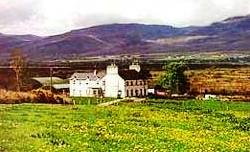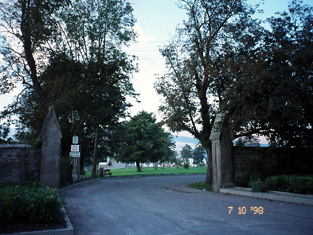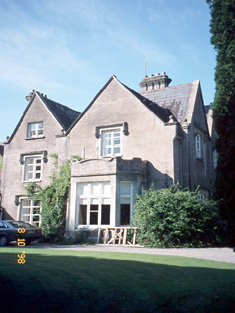Killeen House (Kilcolman)
Houses within 5km of this house
Displaying 10 houses.
Houses within 5km of Killeen House (Kilcolman)
Displaying 10 houses.
| House name | Description | |
|---|---|---|
| Killorglin Glebe | Rev. Robert Denny was leasing Killorglin Glebe to Rev. William de Moelyns at the time of Griffith’s Valuation, when it was valued at £16. The site now appears to be occupied by agricultural buildings. | |
| Abbeylands or The Abbey | Abraham Huggard was leasing this property from Sir William Godfrey at the time of Griffith's Valuation when it was valued at £5 10s. Local sources suggest it was built by the Huggard family in the early nineteenth century. It is still extant and occupied. | |
| Kilburn House | Edward Godfrey was leasing Kilburn House to John W. Bonner at the time of Griffith's Valuation, when it was valued at £11 5s. Bary states that this property was owned for much of the nineteenth century by Reverend William Godfrey and his wife, Lucy Day but was usually let to a tenant. The property is still extant and now a farmhouse B&B run by the Leane family. See www.stayatkilburn.com |

|
| Kilcolman Abbey | Kilcoleman Abbey was the residence of Sir William Godfrey at the time of Griffith's Valuation, when it was valued at £33. Lewis also records it as his residence in 1837. In 1894 Slater referred to it as the seat of Sir John F. Godfrey. In 1906, it was still part of the Godfrey estate and valued at £35 10s.The Irish Tourist Association survey of the early 1940s refers to it as "Godfrey House, a fine type of Elizabethan type mansion". Bary states that the original house, built by the first Godfrey to settle in the area at the end of the seventeenth century, was called Bushfield but that it burned down in 1774 though Wilson still refers to it by this name in 1786 and provides a detailed description of the surroundings. Knightly indicates that a new house was then built by Sir William Godfrey. This house was remodelled twice in the nineteenth century. Sir William Maurice Godfrey sold Kilcoleman in the 1960s and it was demolished in 1977. |

|
| Rathpoge | At the time of Griffith's Valuation, Sir William Godfrey was leasing this property to William Hickson. No house is marked in this area on the Ordnance Survey map, the only buildings being the Kilcolman farmyard. The buildings on the site were valued at £13. It was still in the possession of the Godfrey estate in 1906 with the same valuation but are no longer extant. | |
| Callanafersy House A | Robert Leeson was leasing Callanafersy House to Ephraim Williams at the time of Griffith's Valuation, when it was valued at £12 5s. Bary indicates that this house was leased by the Williams family and probably had been built by them earlier in the nineteenth century. It is still extant and occupied. | |
| Callanafersy House | Richard J. Leeson-Marshall built Callanafersy House around 1861 and the family continued to own the house until well into the twentieth century. It is still extant and occupied. |

|
| Glen Ellen (Kilcolman) | James Godfrey was leasing this property from Lord Monteagle's estate at the time of Griffith's Valuation, when it was valued at £11 10s. Bary indicates that it was in the possession of a branch of the Godfrey family up until the end of the nineteenth century when it was then sold to the Huggard family. Slater notes it as the residence of Jn. T. Huggard in 1894. It has had several owners since then but is still extant and occupied. | |
| Altavilla | Robert Rae was the owner of this property at the time of Griffith's Valuation, when it was valued at £5 5s. It is named as Altavilla on the 1st edition Ordnance Survey map. In 1837 Lewis refers to Ardmoniel Cottage, the seat of R. Rae, but also to Altavilla, residence of J. Morrogh. Bary mentions that Altavilla was associated with the Morrogh family. It was later the residence of the Dodd family and is still extant. | |
| Reeks View | Rev. William de Moleyns was leasing this property from Lord Ventry's estate at the time of Griffith's Valuation, when it was valued at £4 15s, on a holding of 140 acres. It appears on the 1893 edition of the Ordnance Survey map as Reeks View. It is still extant. |

